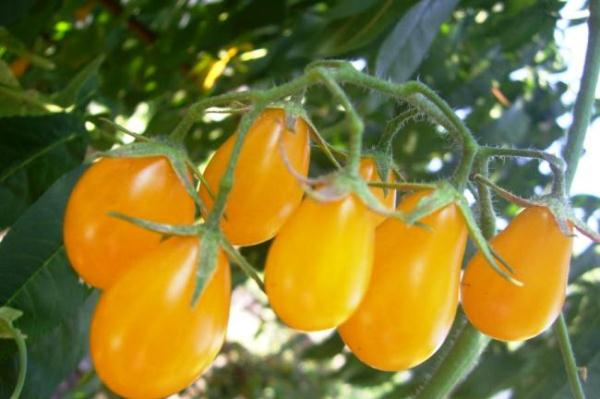If on your site you want to grow high-yielding variety with excellent taste and exotic appearance, then the tomato Honey drop is the best fit for this. Description and characteristics of this variety are presented in this review.
Table of contents
Description and characteristic of a grade of a tomato Honey drop
The origin of the Honey Drop variety is due to the breeders of Russia. It belongs to the middle-early varieties. Recommended to grow in regions with long sunny summer. A variety of cherry tomatoes grown in greenhouses and in the open field.
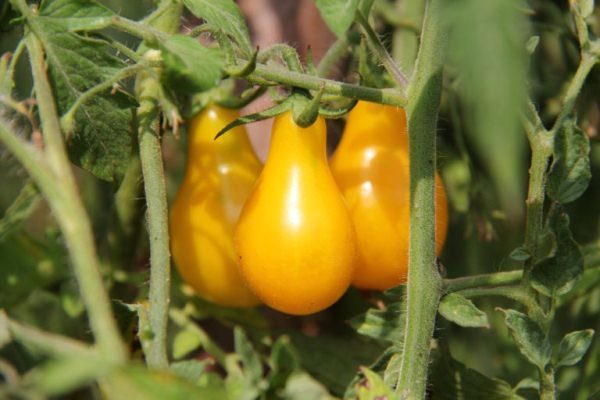
The term of aging is 110-115 days. Shrubs tall, grow 170-200 cm in the greenhouse, 120-150 cm in the open garden. Shrubs should be formed in 2 stalks. Stems are weak, require tying up and pinching. The leaves are similar to the leaves of the potato. The fruits are not large, grow brushes on 14—20 pieces, color is rich yellow. The shape resembles a pear. The weight of each fruit is 15-25 grams. Have a sweet taste with honey flavor.
Advantages and disadvantages
The advantages of the variety are:
- nice taste qualities;
- high yield;
- versatility cultivation (greenhouses, open beds);
- diversity use;
- opportunity seed collection.
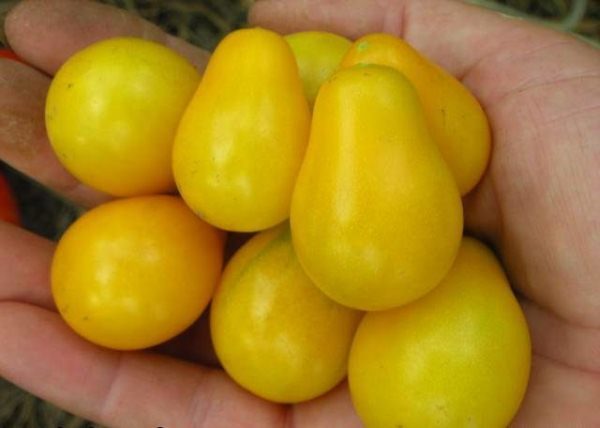
The disadvantages of this class include:
- need for tying up;
- necessarily removal of stepsons;
- propensity to cracking ripe.
Seed preparation
The key to a good harvest is properly grown seedlings. Sowing seeds is necessary in early March. Use seed better than 2 years of aging. Seeds before planting should be soaked for 20 minutes in a 1% solution of manganese for disinfection.
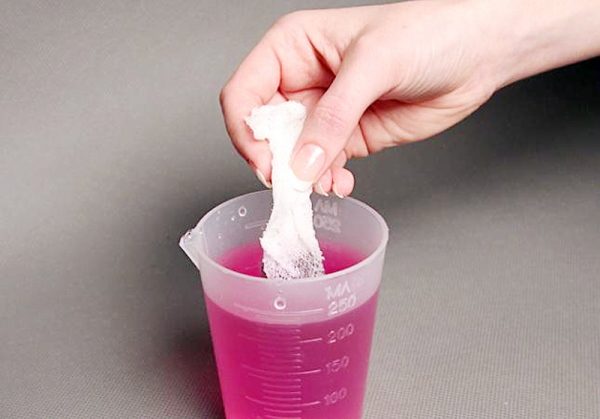
This procedure is necessary to increase immunity to disease. After treatment, the seeds should be washed with running water. Ready for planting seeds sown in containers.
Soil preparation
Tomato Honey drop prefers fertile soil. For planting, you need to mix the soil in equal proportions with sand, peat and add a little ash. to normalize acidity. The soil must be watered with a hot solution of strong manganese for disinfection.
Growing seedlings and care
Ready soil is poured into it oblong boxes, well leveled. Seeds are sown by pressing every 2 cm to a depth of 1 cm. Powdered with a thin layer of soil, moistened with a spray bottle and covered with glass. Carry out in a dark room with a temperature of 23-25 degrees. The glass is periodically removed to saturate the seeds with oxygen.
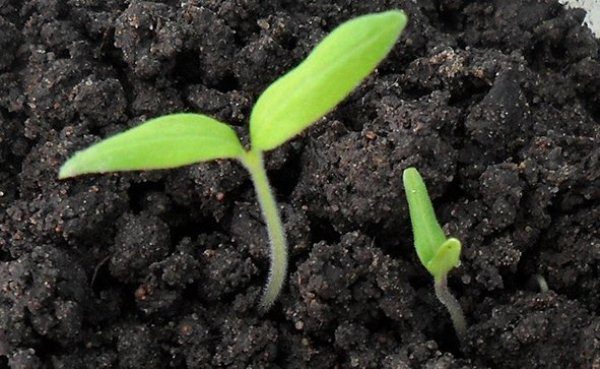
After 5-7 days, after emergence of shoots, the glass is removed and the seedlings are transferred to a well-lit room. The first two days, seedlings need additional lighting. Carry it out with the help of fluorescent lamps. In the future, daylight hours should be at least 14-16 hours. Watering the seedlings should be warm water from the spray. Fertilizing is necessary to make twice - after the appearance of seedlings and after diving. In order to fertilize, you can use the ash solution:
- water — 1 liter;
- ash - 1 tablespoon.
When diving seedlings, gently pinch the central root. At the same time, an additional amount of lateral roots grows, which makes the plant stronger.
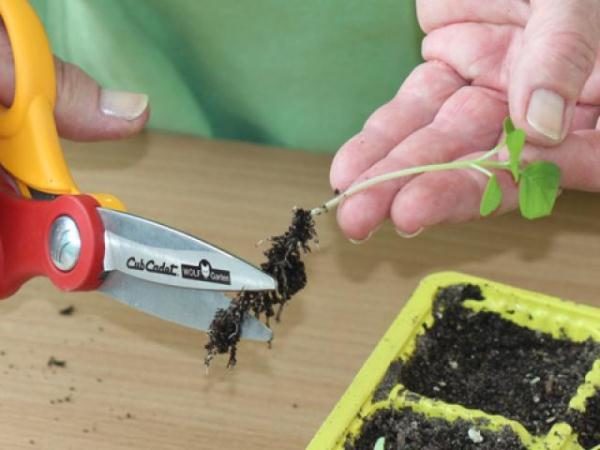
After transplanting plenty of water and make feeding. If there are 3-4 sheets on the seedlings, they are planted in open ground. Two weeks before transplanting, the seedlings must be hardened. Perform this as follows:
- The first two days in the room with seedlings on 2—3 hours to open a window;
- Take out the seedlings out on 3—4 hours;
- everyday increase time finding seedlings in the open air;
- Leave before landing in the fresh air at night.
Transplant to open beds
In the greenhouses seedlings are planted in early April. Greenhouses must be well heated. Seedlings planted after 65 cm in a row. The greenhouse must be periodically ventilated. In the event of a shortage of lighting plants, it is necessary to organize additional lighting. Watering exercise once a week. After watering it is necessary to loosen the soil.
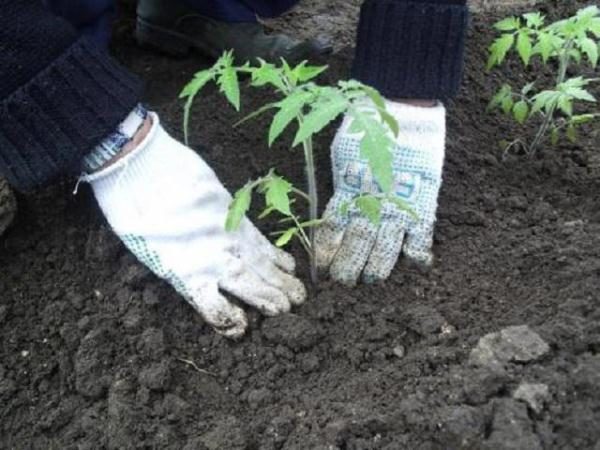
Experienced gardeners are advised to grow this variety in the open field. It is noticed that due to the increased humidity and more dense planting of bushes, tomatoes in the greenhouse are sick more often. On the open beds planted seedlings in the last days of May. We select beds on an open area, well-lit by the sun. Planting seedlings between plants 60 cm. After transplanting seedlings need to tie up. Bushes form in two stems. It is recommended to remove the processes once a week so that they do not interfere with the formation of ovaries.Watering should be moderate, but abundant. It should be watered as the soil dries. Water for irrigation should be separated and warm. After watering, it is necessary to loosen the soil so that there is no stagnant moisture.
Feed must be done three times. The first is performed one week after transplantation. Fertilized bird droppings or mullein can be used as fertilizer. During the flowering period, it is better to apply fertilizers containing a large amount of nitrogen to the soil. When forming golden fruits, tomatoes need fertilizing with fertilizers containing magnesium sulphate.
Diseases and pests
Honey drop is immune to diseases such as:
- late blight;
- gray rot;
- leg black;
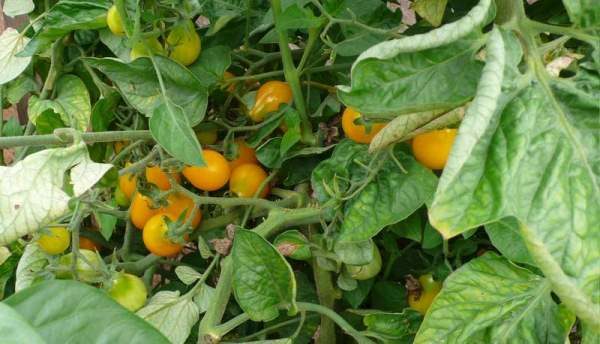
However, adjacent to other varieties can become infected with these diseases. Treatment with phytosporin is recommended for prevention.. From pests as a preventive measure, it is necessary to spray bushes with hydrogen peroxide solution. For aphids, treatment with a solution of household soap helps.
Harvesting tomato
Honey drops mature 100 days after planting. Tomatoes of this sorita are used for canning, they can be dried and consumed fresh in salads. Sweet taste allows you to use it for making jam. Well suited to people who are allergic to red fruits, which have high acidity.
Tomato Honey drop is distinguished not only by its exotic appearance, but also by high yield and excellent taste. Even the pickiest farmer will be satisfied, growing this variety on his plot.
